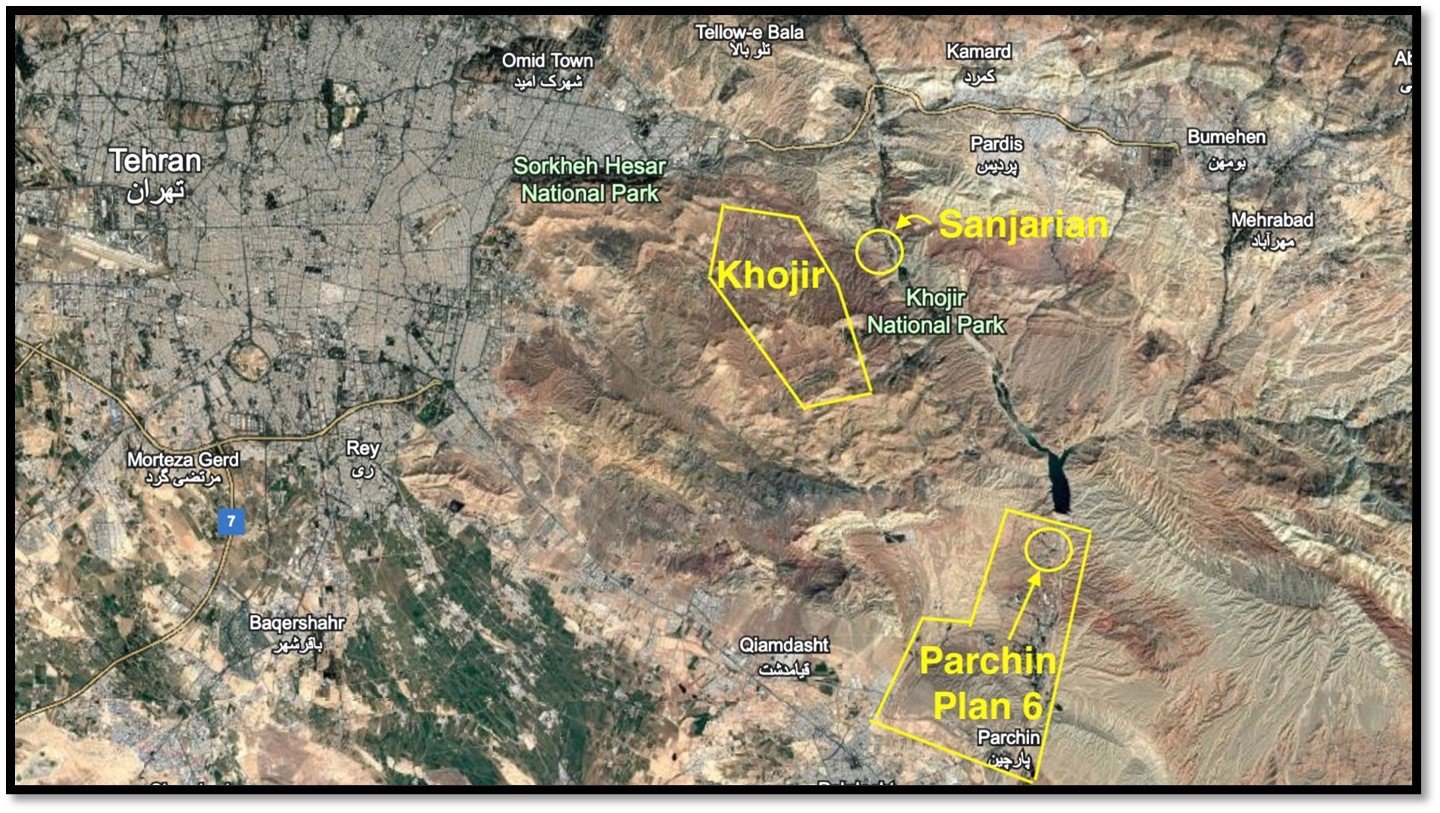Facebook
Twitter
LinkedIn
Pinterest
Reddit
Email
Print
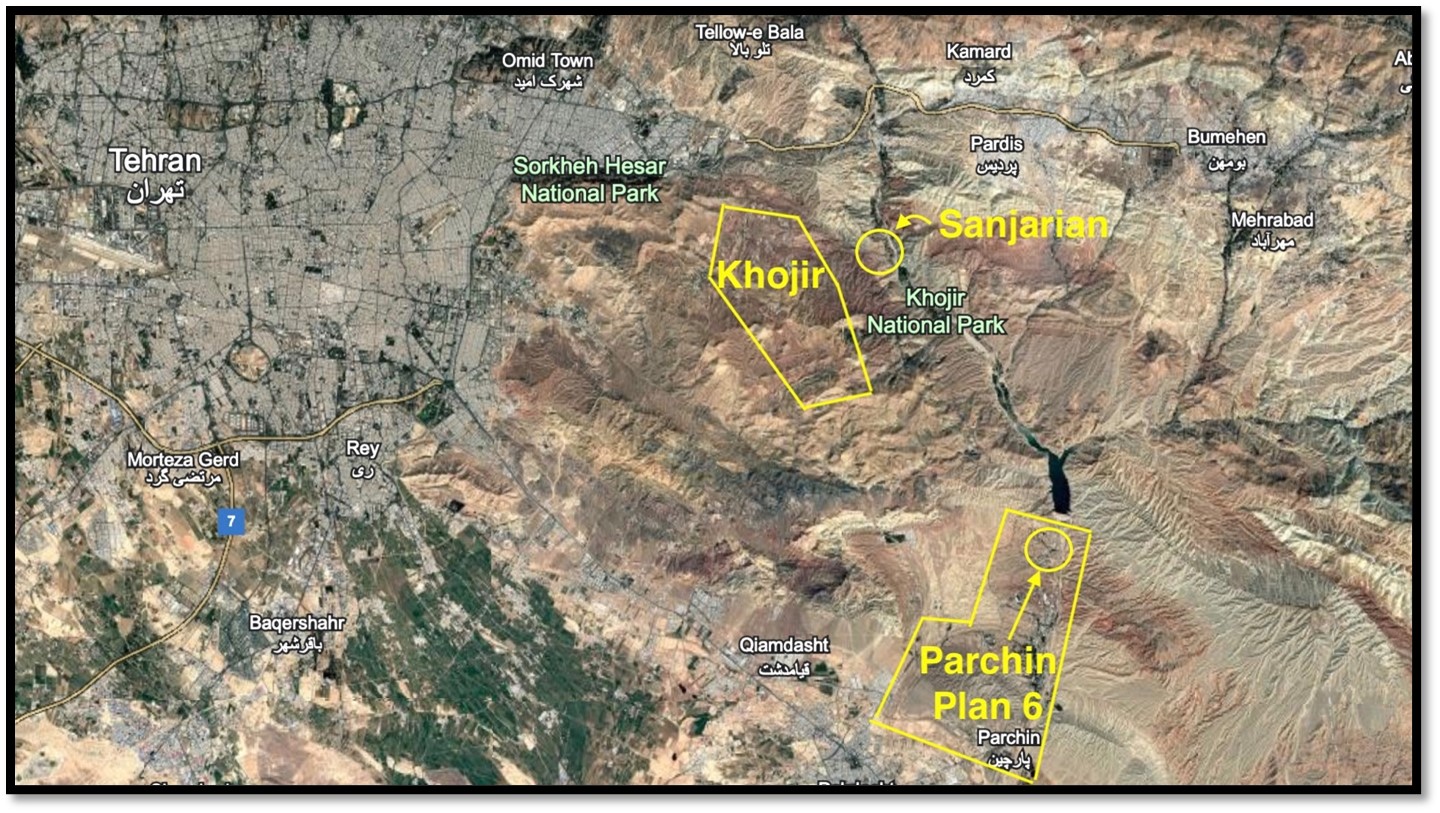 Satellite Imagery of the location of Plan 6 in Parchin, Sanjarian site, and Khojir site – Parchin highway
Satellite Imagery of the location of Plan 6 in Parchin, Sanjarian site, and Khojir site – Parchin highway
According to reports received by the Iranian Resistance in December 2024, the Iranian regime has intensified its activities related to METFAZ (the Farsi acronym for Markaz-e Tahghighat va Tose’e Fanavari-e Enfejar va Zarbeh), or Center for Research and Expansion of Technologies on Explosions and Impact, which is one of the key parts of the bomb-making organization, the Organization for Advanced Defense Research, or SPND, to intensify the development of nuclear warheads.
SPND is a subdivision of the Ministry of Defense commanded by Brigadier General Reza Mozafarinia, who reports to the Minister of Defense, Brigadier General Aziz Nasirzadeh.
New information from within the regime suggests that this activity increase is focused on the research and manufacturing related to nuclear detonation, including but not limited to the EBW explosive detonators. (One of the most contentious issues between the regime and the IAEA regarding the nature of Iran’s nuclear program, which has never been resolved.)
METFAZ uses the Sanjarian site, which is newly called Meshkat Complex in internal communications, for its research activities, and very few personnel travel to this site.
The site of explosive tests and production is inside the Parchin site in Plan 6, also known as Zeinoddin Industries. In recent years, the facilities of Plan 6 of the Parchin site have been significantly expanded, especially in the east and south of the site.
The names and positions of 26 METFAZ executives and key specialists have been identified and updated.
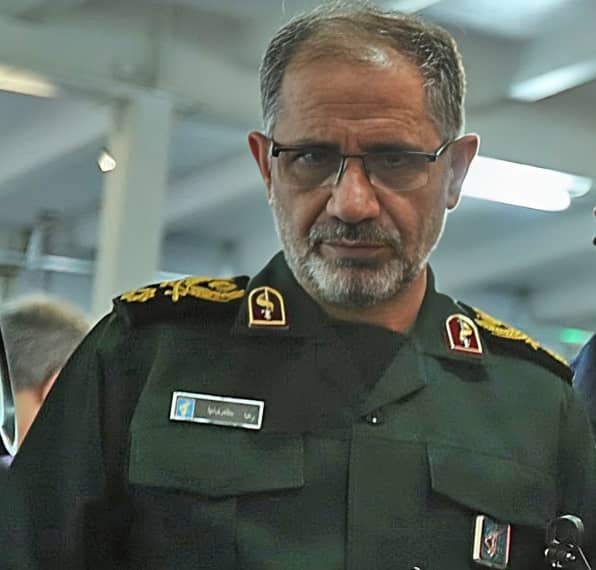 IRGC Brigadier General Reza Mozafarinia
IRGC Brigadier General Reza Mozafarinia
Part of the activities of METFAZ are carried out under the cover of the “Arvin Kimia Abzaar” company, which is affiliated with the Ministry of Defense and, specifically, the IRGC.
To justify its activities, Arvin Kimia Abzaar Company has declared its activities in the field of “tools and materials used in the oil industry, drilling and operation of oil wells” to cover up the work on high-explosive materials under the cover of explosive activities related to oil wells. But our intelligence, and in particular its key personnel, shows that the company is entirely under the control of the regime’s leading experts in the field of nuclear weapons, namely explosions.
Key Project Personnel
According to this information, two people who play a key role in this project and hold executive positions in Arvin Kimia Abzar Company for this purpose are:
Saeed Borji
Akbar Motallebizadeh
Borji is chairman of the board of directors, and Motallebizadeh is the CEO of Arvin Kimia Abzar Co.
Both are key figures in the SPND Organization who worked on various parts of the manufacture of nuclear weapons explosive detonators, including the EBWs (Exploding Bridgewires), headed by Brig. Gen. Mohsen Fakhrizadeh Mahabadi (killed in Nov 2020).
Borji has been a member of the Islamic Revolutionary Guard Corps (IRGC) since 1980 and has long headed METFAZ. He has been involved in various nuclear weapons projects and is a key official in the tests mentioned in the IAEA reports. Among other things, Saeed Borji received training in the manufacture of detonators and research using explosive chambers from the Ukrainian nuclear scientist Vyacheslav V. Danilenko around 2000 (Danilenko lived in Iran from 1996 to 2002).
Advanced Materials Research and Technology Center – Chemical Group (Karimi Group) is another part of SPND related to the above experiments. The previous name of this center was the New Chemical Research Center (Matshen). The head of this group is Akbar Motallebizadeh.
Another employee of this company, Mahmoud Taheri Shahraeini, who has been introduced as the head of the company’s research center, is one of the experts of the Ministry of Defense who previously worked in the Aerospace Organization in Shahabadi Industries in Parchin.
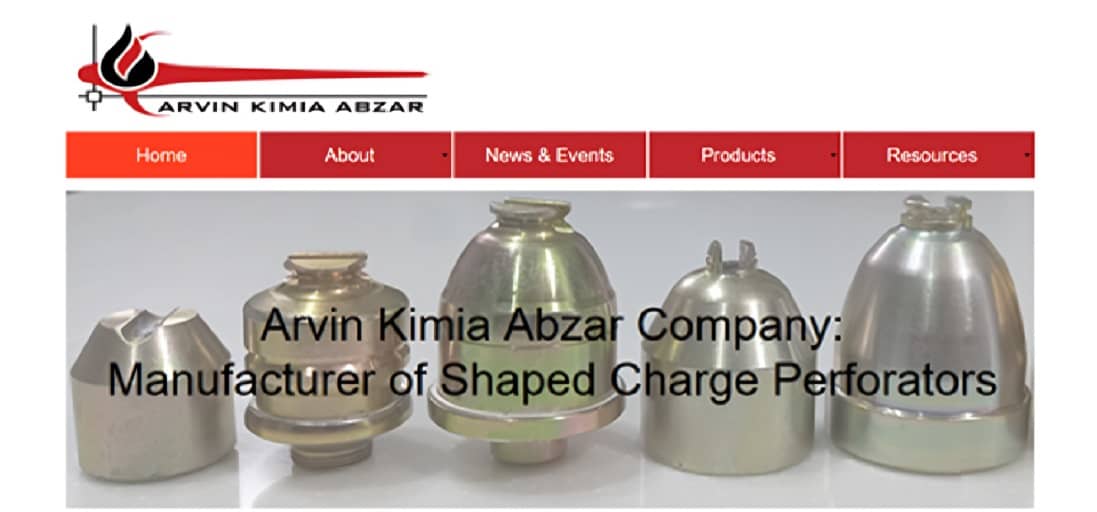 Arvin Kimia Abzar Company- Manufacturer of Shaped Charge Perforators
Arvin Kimia Abzar Company- Manufacturer of Shaped Charge Perforators
Arvin Kimia Abzar Company, which has ostensibly announced its activities in the field of oil drilling and services, does not have an official website. The initial structure of the company’s site was created in 2020, remained unfinished, and the site was never activated.
The site’s introduction states that it is “a manufacturer of all types of mesh balls and accessories for oil and gas wells.” Leaving the website incomplete for a commercial company that entails high cost reflects the level of secrecy about its actual activities.
Company Location and Tests
The center is located in the Sanjarian area, a military zone near the Parchin site, southeast Tehran.
In order to accelerate activities in the field of explosive testing, Arvin Kimia Abzar Company, which has been operating since 2018, has been officially moved to the vicinity of the village of Sanjarian since April 2024. The company’s protected area is newly named the Meshkat Complex, and its location is identified by this name in the regime’s internal communications.
 New imagery of Sanjarian in 2024; newly named Meshkat complex
New imagery of Sanjarian in 2024; newly named Meshkat complex
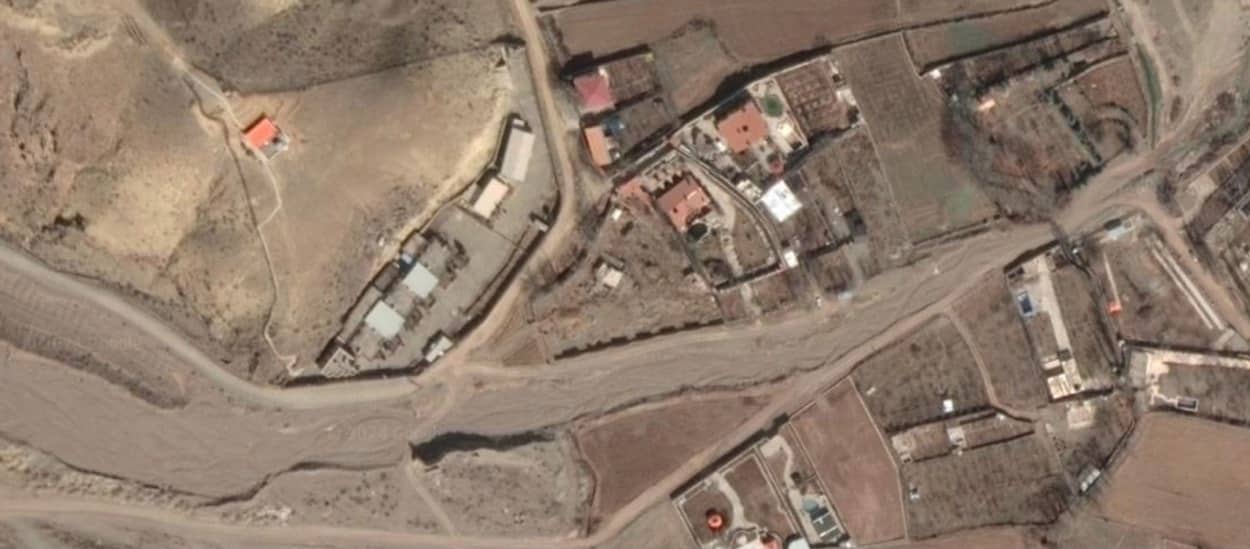 Sanjarian in 2017 when NCRI announced that its activities have moved to Plan 6 in Parchin
Sanjarian in 2017 when NCRI announced that its activities have moved to Plan 6 in Parchin
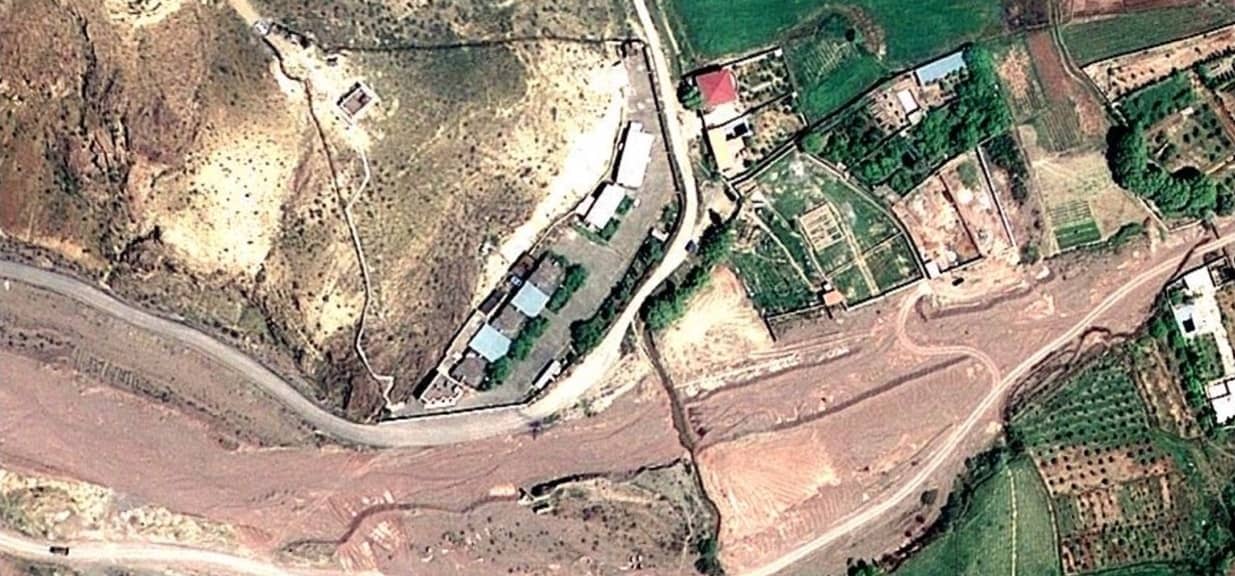 Satellite imagery of Sanjarian in 2009, when it was first exposed by the NCRI
Satellite imagery of Sanjarian in 2009, when it was first exposed by the NCRI
METFAZ continues to use Plan 6 (also known as Zeinoddin Industries) in the Parchin site for explosive tests and production. In recent years, the Plan 6 facilities have significantly expanded.
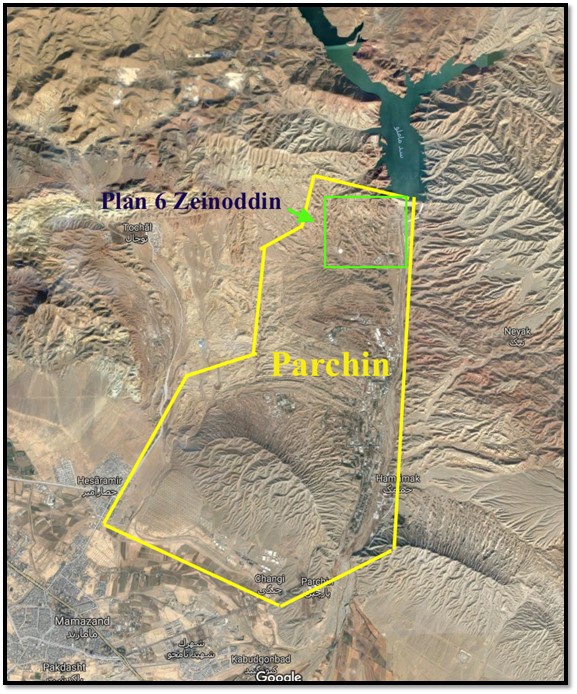 Satellite Imagery of the position of plan 6 about the Parchin
Satellite Imagery of the position of plan 6 about the Parchin
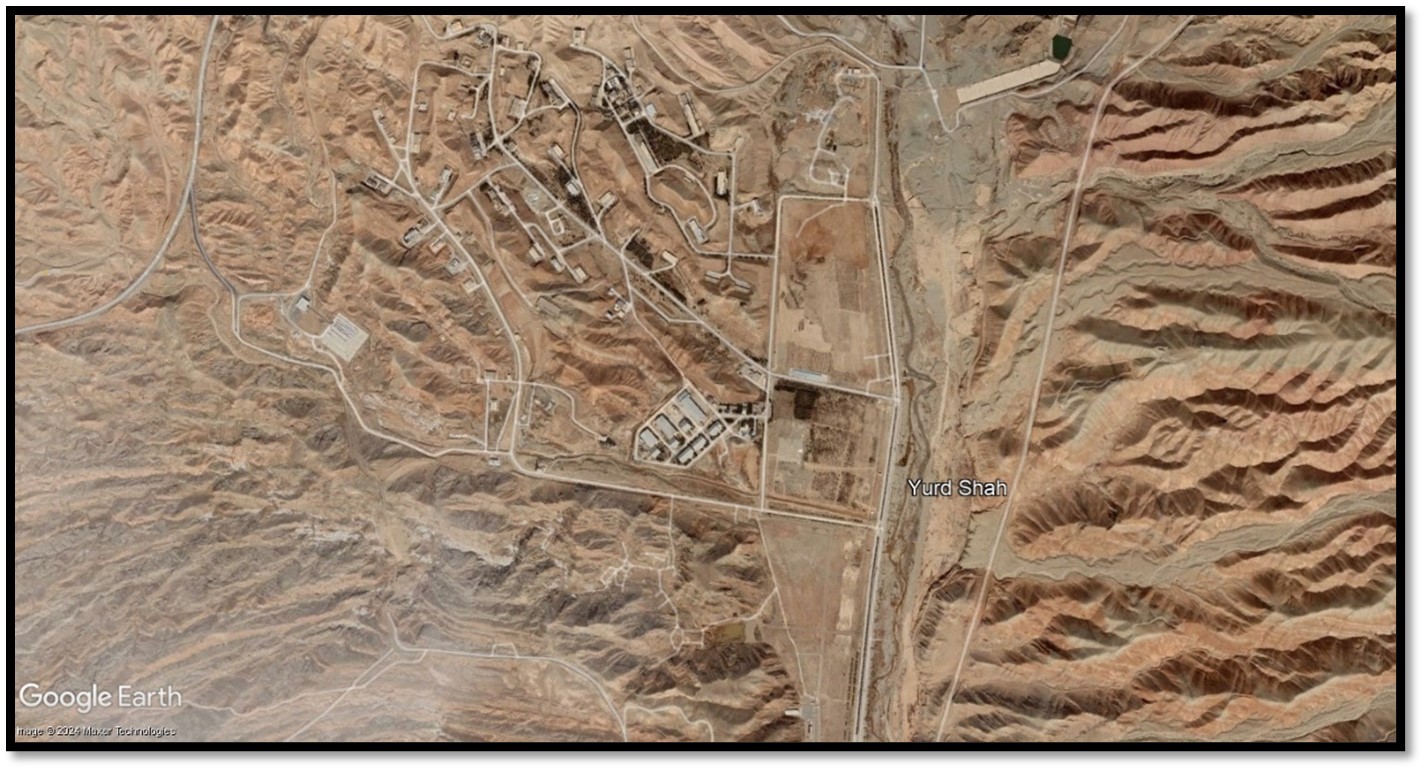 2017 Satellite Imagery of the Plan 6 Area
2017 Satellite Imagery of the Plan 6 Area
 2024 Satellite Imagery of Plan Area 6 with New Structures
2024 Satellite Imagery of Plan Area 6 with New Structures
 Satellite Imagery of the location of Plan 6 in Parchin, Sanjarian site, and Khojir site – Parchin highway
Satellite Imagery of the location of Plan 6 in Parchin, Sanjarian site, and Khojir site – Parchin highway
Secrecy measures on the activities of this company and the Sanjarian site
The location of the Meshkat (Sanjarian) site and information on its activities are strictly confidential. According to reports received by the Iranian Resistance in December 2024, the activities of the Meshkat complex (the Sanjarian site) are being kept secret from the people of the village of Sanjarian, which is located a few hundred meters away. Locals are prohibited from entering the side road that leads to this site. The residents of the area are not aware of the activities of this site and do not approach it.
The village of Sanjarian is under military control, and the Tehran-Parchin highway is a military road.
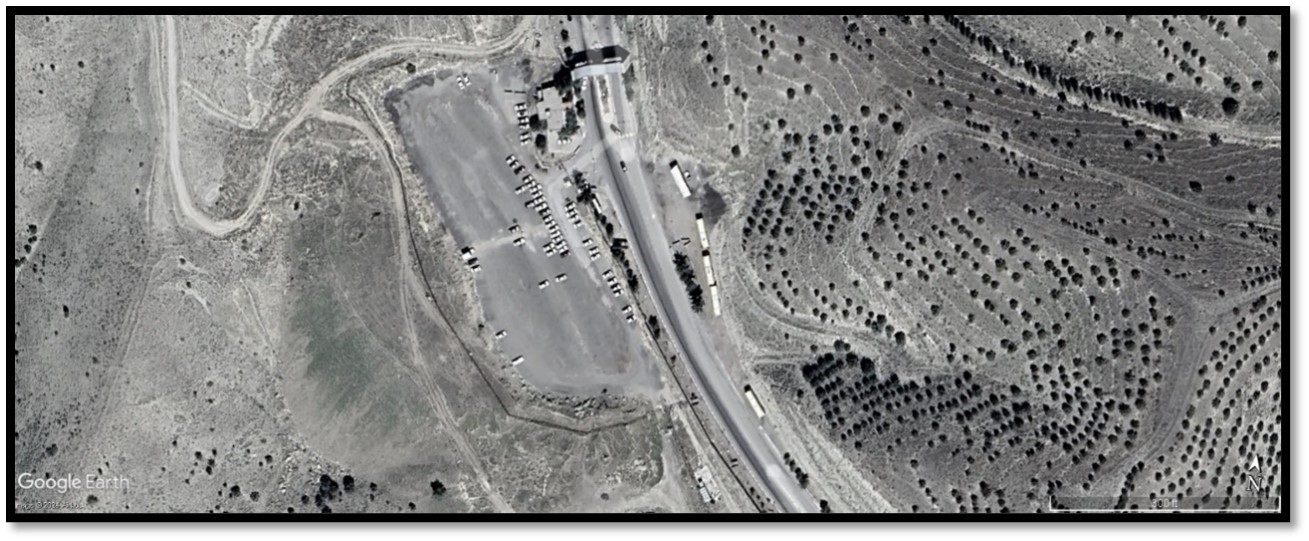 Satellite Imagery of the entry control point on Parchin Road
Satellite Imagery of the entry control point on Parchin Road
Background Information
SPND is the main weaponization organ of the mullahs’ nuclear project. METAZ is one of SPND’s main subsidiaries.
The center has been operating under the name of the Defense Research and Innovation Organization (SPND) since 2010. The structure was created at the suggestion of Brig. Gen. Mohsen Fakhrizadeh (the regime’s nuclear weapons mastermind, killed on November 27, 2020) led the weapons division of the nuclear project for nearly two decades.
In July 2011, the NCRIUS unveiled the existence of this organ, stating that it is directly supervised by the Minister of Defense. The November 2011 report by the IAEA referenced SPND for the first time. The U.S. State Department placed SPND on its sanctions list on August 29, 2014. In September 2021, Brig. Gen. Reza Mozaffarinia was appointed as the head of the SPND, a position he continues to hold.
Saeed Borji, Akbar Motallebizadeh, and some other key SPND organization members were previously members of the “Parsian Asr Arvin” company’s board of directors. The company was established in January 2015 and was dissolved in April 2018. At its dissolution, the company’s address was in the Chamran complex on Langari Street, the SPND organization’s headquarters. Some of the key officials of the SPND organization, such as Fakhrizadeh and Fazlollah Keshan-Zare, were also members of the board of directors of this company.
In 2017, NCRIUS revealed for the first time the activities of the different organs in the research institute in the Parchin 6 project.
In addition to building the EBW, METFAZ and its key experts, such as Borji, are involved in the construction of other parts necessary for nuclear weapons. The organization has other facilities in other parts of Iran, including using the Semnan site to conduct its explosive tests. One of the centers used by METFAZ is the Abadeh site called Marivan, which is considered one of the four suspected centers investigated by the IAEA. Other activities in METFAZ were related to the construction of a high explosive chamber at the Parchin site, which was pursued by Borji.
The issue of high-explosive tests by the Iranian regime has been raised in the IAEA’s reports since December 2005. The regime refused to respond until the matter was raised in the November 2011 report of the IAEA, in the appendix highlighting 12 outstanding issues related to weaponization, known as PMD activities. One of their specific questions was about EBW (Multi Point Initiator). The regime finally linked the test in 2014 to using the same technique in oil wells. In December 2015, the Iranian Resistance revealed that even though the lives of oil engineers were in danger and the requests they had made to the Ministry of Defense, the regime had not provided the engineers with this kind of detonators and that the regime’s responses to the IAEA were fabricated and utterly false.
Conclusion and Policy Suggestions:
While the international community and the IAEA have mainly focused on the amount and the enrichment level of uranium Tehran possesses, which would provide fissile material for the Bomb, the central part, namely the weaponization, has continued with little scrutiny. The regime has used deceptive tactics to prevent any mechanism for verification, and it has yet to provide an opportunity or the means for the IAEA to have a satisfactory answer to the inquiries it has raised.
Our revelation today shows that the regime has no transparency related to its program for building an atomic bomb and is moving towards building the bomb at a rapid pace.
The site has so far been made inaccessible to the IAEA. As such, the IAEA should immediately visit this site and inspect it.
In the past two decades, since the August 2002 NCRI’s revelation of the Natanz uranium enrichment site, which triggered inspections by the IAEA, the regime has never cooperated with the international community and the UN nuclear watchdog. It has denied all its bomb-making activities despite the evidence.
The regime’s nuclear dossier must be immediately referred to the United Nations Security Council, and all Security Council sanctions related to the regime must be reinstated by activating the snapback mechanism.
Maryam Rajavi, the President-elect of the NCRI, has articulated a Ten-point Plan for the transitional period, which advocates a non-nuclear Iran. In this regard, the Iranian Resistance, relying on its extensive network inside the country and by taking great risks, has made more than 120 revelations about various aspects of the regime’s nuclear program. NCRI has been the most active player in confronting and exposing the Iranian regime’s nuclear program in the past three decades and has acted as the most significant factor in stopping the regime from obtaining a nuclear bomb.
The mullahs’ regime has been severely weakened since the 2022 uprising, especially after the overthrow of Bashar al-Assad. The regional balance of power is working vigorously against Khamenei. In such a situation, when the regime is desperate, it will invest much more energy and resources in building an atomic Bomb as a means of survival. The information obtained by the Iranian Resistance, some of which were presented today, confirms this. The only long-term solution to prevent the most dangerous regime from acquiring the most dangerous weapon is the overthrow of the regime by the people and the organized resistance. This is more within reach than ever before.
